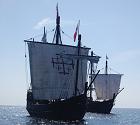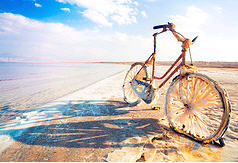 The journey of a startup is like a hypothesis to be proven. Chains of big, small, nested, one layer giving birth to the other experiments to be run to prove it. Unless you prove it, everything remains an idea, the seed of which remains in your head. To allow the seed to germinate and the shoots to pop-out, you have to convert the idea into something tangible.
The journey of a startup is like a hypothesis to be proven. Chains of big, small, nested, one layer giving birth to the other experiments to be run to prove it. Unless you prove it, everything remains an idea, the seed of which remains in your head. To allow the seed to germinate and the shoots to pop-out, you have to convert the idea into something tangible.
In a high-technology startup, an entrepreneur looks at a series of trends or observable phenomena, as scientists calls it. The trends give you a certain set of assumptions. Based on the assumptions you run multiple controlled experiments.
Something similar happened to me in just around summer last year. I developed this belief, “If there are 300m youngsters on facebook, then they would look for jobs within the boundaries of facebook.” A hypothesis was born.
How do I prove it? Not easy, without having a full blown product with a good user-interface. A step in proving the hypothesis is figuring out the variables in the controlled experiment, that first variable for me was validation from a small group. Facebook Dev Garage, Bangalore chapter happened in October and I presented at the event (Thx, Vijay). A scrappy prototype cooked with 2-3 days of effort over Facebook API and Amazon S3 was well received in a crowd of 140+.
Then things took back seat and the hypothesis was semi-forgotten; The Morpheus Batch 5, broken laptop, sickness, family chores, visitation from extended family, yada-yada. Then the year-end downtime happened, I wrote a blog post and restarted the experiment and whipped the code out from woodwork. After several weeks of intermittent coding, last week, I quietly released the consumer facing version to check the reception of the antenna. Then I got a resume. One experiment was over.
Tonight, I incrementally rolled out an alpha version and started another experiment. It is still very brittle, has a simple user-interface, but is set out to run that experiment to prove the larger hypothesis.
The Pinta & The Nina were the two ships (out of three) used by Christopher Columbus in it’s first voyage across the Atlantic Ocean in 1492. The replicas are shown in the pic above. Picture courtesy Christopher Columbus foundation.
 Unless you write a manuscript and revise it multiple times and get rejected by at least 5 publishers–how can you write one of India’s best-selling book? Unless 20 VCs label your ideas as stupid, how can the 21st get it funded?
Unless you write a manuscript and revise it multiple times and get rejected by at least 5 publishers–how can you write one of India’s best-selling book? Unless 20 VCs label your ideas as stupid, how can the 21st get it funded? I was reading an interesting
I was reading an interesting